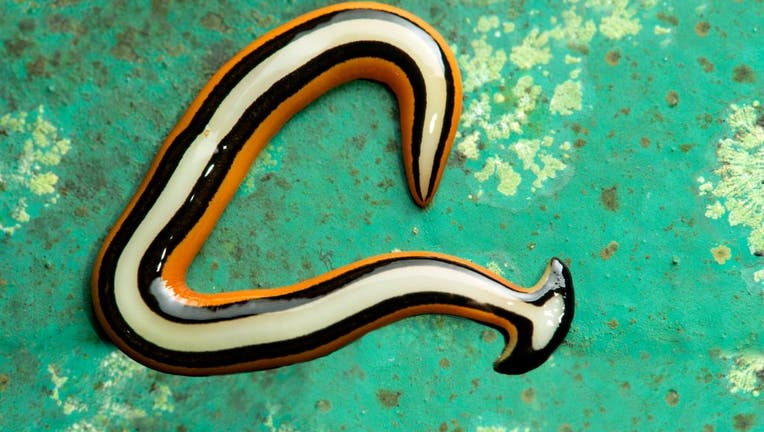Hammerhead flatworms are the new creepy crawly's to avoid in Texas

Hammerhead flat worm, Bipalium sp., Land planarian family, Geoplanidae, Kinabalu National Park, UNESCO nature world heritage site, Sabah, Borneo, Malaysia. (Photo by: Gunter Fischer/Education Images/Universal Images Group via Getty Images)
HOUSTON - What other creepy things are going to invade next? Last time it was murder hornets, now it’s hammerhead flatworms.
The hammerhead flatworm, or the Bipalium kewense, is light, honey-colored with one to five dark stripes and a dark collar. Their heads form a half-moon shape, which is why they're referred to as 'hammerheads'. The other invasive species, the Bipalium vagum, has appeared in the Houston area before, and they pose the same threats, says The Texas Invasive Species Institute (TISI).
These toxic and aggressive predators can grow up to 18 inches, making them appear snake-like, and prefer hot and humid environments, so Houston provides the perfect habitat.
ANIMALS: Missouri man credits cow with helping him accomplish decade-long fishing goal
The worms secrete chemicals through their skin which can irritate human skin if you touch them.
Hammerhead flatworms are predatory and carnivorous as they have been known to eat earthworms and other insects.
You may be tempted to just chop it in half to kill it, but it could be the worst thing to do.
Flatworms can regenerate. If you cut off a portion, within 10 days, it will begin to form a head and grow into a new flatworm. Scary.
DOWNLOAD THE FOX 26 HOUSTON APP
To kill it, The Texas Invasive Species Institute suggests a combination of citrus oil and salt or vinegar alone, if it’s put directly on the flatworm. If you put it in a Ziploc bag, it will ensure the creature does not crawl away.
Remember to use gloves, a paper towel, or a stick when handling live flatworms. Wash your hands with warm soapy water, and rinsed in alcohol or a standard hand disinfectant.
If you happen to come across a flatworm, TISI is requesting distributional data. Take a picture along with coordinates for distribution and send an email to invasives@shsu.edu.
To read more, visit the TISI website.

